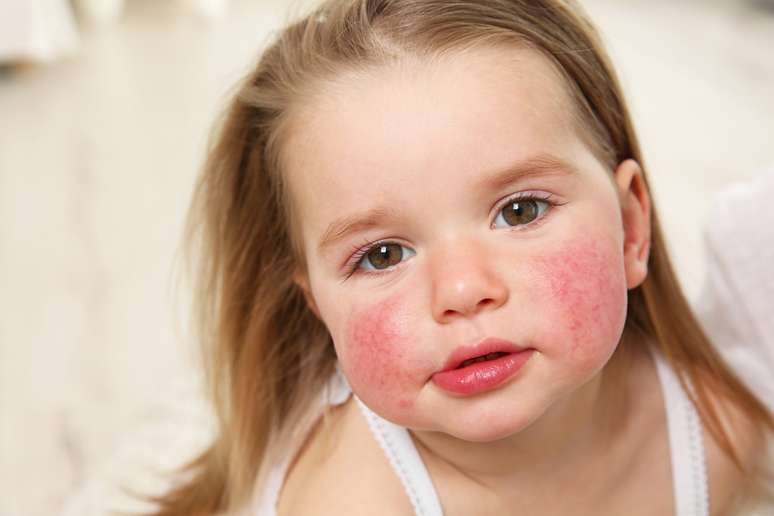The condition can appear as early as the first months of life. Healthcare professionals need to be guided regarding restrictions Food allergy is a condition that can affect thousands of people at different stages of life. In most cases, the allergic reaction occurs soon after ingesting the food, which can cause various symptoms such as […]
The condition can appear as early as the first months of life. Healthcare workers must be informed about the restrictions
Food allergy is a condition that can affect thousands of people at different stages of life. In most cases, the allergic reaction occurs soon after ingesting the food and can cause various symptoms such as gastrointestinal, skin and even respiratory irritation. For children, especially in the first months – or even years – of life, this can cause intense discomfort that is, at first, difficult to identify.
Caring for little ones who must limit themselves to certain foods goes beyond medical work. It is also necessary that the environments they frequent take the necessary measures to ensure that the child is safe, without feeling excluded due to his/her limitations. And this can be a real challenge!
Intolerances x food allergies
Daniela Anderson, pediatrician, neonatologist and child intensivist, explains that, first of all, it is necessary to differentiate allergy from food intolerance, as the latter tends to generate a lot of confusion. “Food intolerance represents a gastrointestinal reaction to the ingestion of a food, which can cause abdominal distension, diarrhea and vomiting. In other words, the child does not react well to the digestion of that food and ends up, in some way, expelling it from the mouth, body or develop gastrointestinal symptoms, such as excessive gas production,” he explains.
On the other hand, food allergies are an immunological reaction that releases substances from the body’s immune system in response to the consumption of certain foods. “As newborns, the first reaction that may occur is milk protein allergy, which can affect both infants receiving formula milk and those breastfed. This is a disease that may manifest itself with irritability, generally at cause of esophagitis”, explains the pediatrician.
Signs of allergy
Other aspects that can be observed as a reaction to milk protein allergy are:
- Increased reflux: “breast milk or artificial milk, mixed with gastric juice, becomes an acidic content. This acidity, when it returns to the esophagus, generates a sensation of intense pain in the child”, he underlines;
- Changes in the appearance of the stool: generally tending towards a greenish colour;
- Diaper rash: Babies may develop perianal diaper rashes that are difficult to treat, as the acidity in the stool becomes recurrent;
- Presence of mucus or blood in the stool: in these cases the pediatrician and, sometimes, with the help of the gastropediatrician, must monitor the family. “If babies are exclusively breastfed, doctors should recommend excluding milk and dairy products. And, as babies, feed them infant formula, using extensively hydrolyzed formulas to improve their condition,” explains the doctor.
With each new phase, a new discovery
After these first months, Daniela explains that, with the introduction of food, the child begins to be exposed to other foods which can also trigger allergic reactions. “There is a period, from 6 to 9 months, that we call the immunological window. It is in this phase that we should introduce potentially allergenic foods to children, as this means they have less chance of developing a future allergy,” explains the pediatrician.
In this case, manifestations of food allergies may come from the gastrointestinal tract, such as diarrhea, bloating or vomiting. But they can also be cutaneous, with skin irritation. “In some children this only occurs on the skin of the mouth, i.e. only where the food has come into contact. In others a ‘rash’ may occur, where the skin all over the body may become red and even redder. often and sometimes it comes off,” he points out.
Other possible manifestations of food allergies are respiratory. “Some children will present respiratory disorders, bronchospasm (commonly known as wheezing), induced by some foods,” adds Daniela.
Life after food allergy diagnosis
Now let’s talk about the daily life of this child who suffers from food allergies. Once the diagnosis has been established, we must think about the special care that this little one will need to guarantee his safety and quality of life wherever he is. Daniela underlines the importance of the family which guides, in addition to the child himself, all the adults who are involved in his care. “Whether the child stays with grandma, nanny or goes to school, it is important that all responsible adults know what foods they cannot expose themselves to.”
Additionally, it is important to talk to the team preparing the meals and, if possible, visit the place where they prepare the food. An effective strategy is to request the menu in advance and indicate any necessary adaptations.
“Ask the pediatrician, or the doctor who follows the case, to write a letter to the nursery, or to the school in general, with indications on which foods the child cannot eat or have contact with”, advises the specialist.
To care, you need to welcome
Safety in the school environment must be the result of collaboration between family and school, so that together they can offer a welcoming environment, even with restrictions. The more effective this welcome is for children with food allergies, the lower the risk of feeling excluded or even involved in embarrassing situations, such as bullying by peers. In some situations, the guidance of a psychologist can help increase the self-esteem of children or adolescents. As well as helping you get along with your colleagues and deal with daily needs.
Source: Terra
Ben Stock is a lifestyle journalist and author at Gossipify. He writes about topics such as health, wellness, travel, food and home decor. He provides practical advice and inspiration to improve well-being, keeps readers up to date with latest lifestyle news and trends, known for his engaging writing style, in-depth analysis and unique perspectives.









